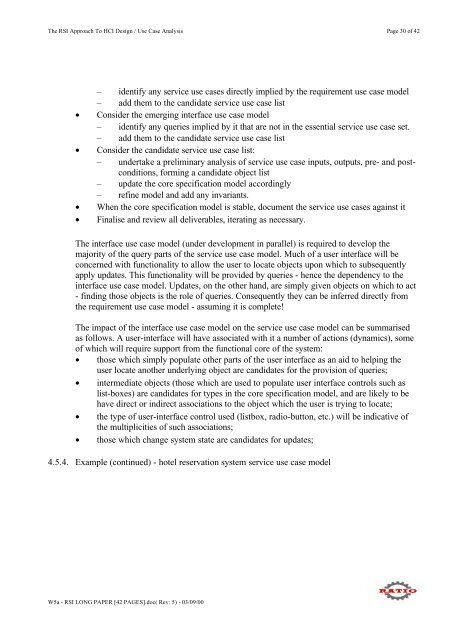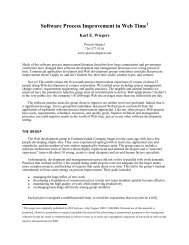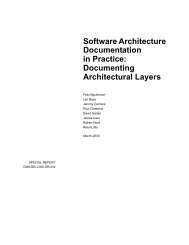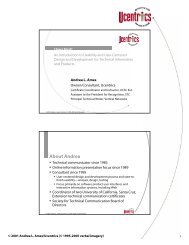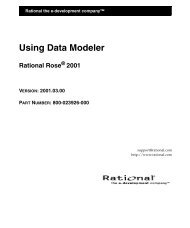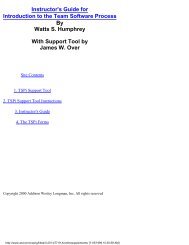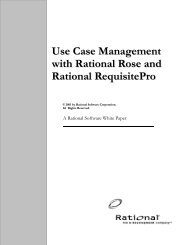RSI - A Structured Approach Use Cases and HCI Design
RSI - A Structured Approach Use Cases and HCI Design
RSI - A Structured Approach Use Cases and HCI Design
You also want an ePaper? Increase the reach of your titles
YUMPU automatically turns print PDFs into web optimized ePapers that Google loves.
The <strong>RSI</strong> <strong>Approach</strong> To <strong>HCI</strong> <strong>Design</strong> / <strong>Use</strong> Case Analysis Page 30 of 42<br />
– identify any service use cases directly implied by the requirement use case model<br />
– add them to the c<strong>and</strong>idate service use case list<br />
• Consider the emerging interface use case model<br />
– identify any queries implied by it that are not in the essential service use case set.<br />
– add them to the c<strong>and</strong>idate service use case list<br />
• Consider the c<strong>and</strong>idate service use case list:<br />
– undertake a preliminary analysis of service use case inputs, outputs, pre- <strong>and</strong> postconditions,<br />
forming a c<strong>and</strong>idate object list<br />
– update the core specification model accordingly<br />
– refine model <strong>and</strong> add any invariants.<br />
• When the core specification model is stable, document the service use cases against it<br />
• Finalise <strong>and</strong> review all deliverables, iterating as necessary.<br />
The interface use case model (under development in parallel) is required to develop the<br />
majority of the query parts of the service use case model. Much of a user interface will be<br />
concerned with functionality to allow the user to locate objects upon which to subsequently<br />
apply updates. This functionality will be provided by queries - hence the dependency to the<br />
interface use case model. Updates, on the other h<strong>and</strong>, are simply given objects on which to act<br />
- finding those objects is the role of queries. Consequently they can be inferred directly from<br />
the requirement use case model - assuming it is complete!<br />
The impact of the interface use case model on the service use case model can be summarised<br />
as follows. A user-interface will have associated with it a number of actions (dynamics), some<br />
of which will require support from the functional core of the system:<br />
• those which simply populate other parts of the user interface as an aid to helping the<br />
user locate another underlying object are c<strong>and</strong>idates for the provision of queries;<br />
• intermediate objects (those which are used to populate user interface controls such as<br />
list-boxes) are c<strong>and</strong>idates for types in the core specification model, <strong>and</strong> are likely to be<br />
have direct or indirect associations to the object which the user is trying to locate;<br />
• the type of user-interface control used (listbox, radio-button, etc.) will be indicative of<br />
the multiplicities of such associations;<br />
• those which change system state are c<strong>and</strong>idates for updates;<br />
4.5.4. Example (continued) - hotel reservation system service use case model<br />
W5a - <strong>RSI</strong> LONG PAPER [42 PAGES].doc( Rev: 5) - 03/09/00


